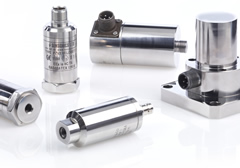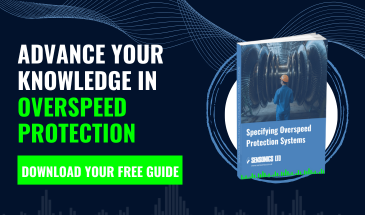Cost Effective Protection For Smaller Plant - VEL/GDC
PRESS RELEASE
10th September 2013
For Immediate Release
COST-EFFECTIVE PROTECTION FOR SMALLER PLANT
Protecting smaller, yet critical items of rotating plant such as fans and pumps, has become increasingly important as the focus to improve efficiencies, reduce energy consumption and eliminate downtime has moved beyond protecting only more expensive assets, such as turbines and compressors. However, the higher cost of more sophisticated protection systems is difficult to justify for smaller machinery operating in less critical applications, although the requirement for low-cost sensors offering direct connection via 4-20mA current loop, needs to be met.
Condition monitoring specialists SENSONICS have been working with industry for over 20 years, developing effective and affordable monitoring and protection devices which are appropriate for smaller items of plant. However, matching this type of product to the application is not always straightforward and it’s important to outline the key points which need to be considered along with the problems that can be encountered. For example, the majority of absolute vibration transmitters available today utilise a standard piezoelectric compression technique coupled with electronics performing a current sink in the circuit loop to the PLC / DCS. The advantage of this solution is that no other power is required for the sensor and a single cable pair can be used from the connecting system to the machine
However, whilst the sensor is simply mounted on the machine bearing case and connected to the current loop, there are pitfalls to be avoided. These include the earthing regime, low frequency vibration and high acceleration noise, which can lead to measurement error and spurious machine shutdown in protection applications, resulting in expensive downtime.
Overcoming Earthing Problems
Earthing and grounding issues are where the majority of problems in new installations occur, particularly in heavy industry where power usage is high and effective earthing regimes are difficult to achieve. The internal sensor arrangement relies on a very high impedance circuit to extract the charge from the ceramic sensor and therefore with limited isolation to the external case, pick-up from a noisy earth is unavoidable and can appear on the output as an unstable current reading.
This is because at the connecting system end the transducer low is usually connected through a terminating resistor to a different, normally cleaner, ground point which offers no common mode advantage. If the transducer low could be connected to ground at the system end (rarely available in PLC’s) there is the option to ground to the machine which effectively provides the required common mode rejection. However, this is against best practice and could result in large current flows in the sensor cables due to the potential differences identified with the initial problem.
One practical method utilised on sites to reduce this effect has been the installation of a galvanic isolator / current repeater between the sensor on the machine and the connecting system. This has the effect of terminating the sensor 4-20mA circuit with a common earth and repeating the current onto the connecting system earth regime with no continued interference.
Spurious Frequency Issues
Whilst the transducer is normally utilised on the main drive train bearings, other mechanical systems on the machine (e.g. oil pump) can interfere with the measurement. Fundamentally the sensor element is an accelerometer with a wide bandwidth of measurement (beyond 10kHz) and auxiliary systems running at higher speeds can generate high acceleration vibration at high frequencies (20g at 1kHz for example). These represent a very small vibration displacement (few um) but have a large impact on the transducer as the high charge output from the piezo-ceramic material causes saturation in the integration circuitry and subsequently an erroneous reading.
The sensors primary purpose is to measure vibration at the machine running speed, typically in the range of 10Hz to 50Hz. To avoid spurious readings it is important there are no low frequency structural movements (<3Hz) present on the machine.
Since the sensor has limited filtering capabilities, a low frequency event can have a significantly large impact on the measured reading due to the inherent integration in the device (higher gain at lower frequencies). This type of issue is rare, but is a reminder to ensure the transducer is well mounted and best practice applied to the routing of the connecting cable.
Sensonics has recognised the need for a sensor which can meet with heavy industrial demands and can be utilised on a wide range of plant with reduced sensitivity to auxiliary systems. The VEL/GDC is an electro dynamic sensor providing a 4-20mA current sink output proportional to velocity vibration and offers the advantage of offering double isolation in conjunction with a low impedance circuit making it suitable for high noise environments. Due to the electro dynamic nature of the sensor assembly both high and low frequency events are filtered mechanically and since no integration is required the arrangement is immune to the saturation seen in piezoelectric devices. ENDS.
Further details on VEL/GDC sensors are available from: Russell King, Sensonics Ltd,
Berkhamsted, Hertfordshire, UK.
Tel: +44 (0) 1442 876833. Fax: +44 (0) 1442 876477
Email: sales@sensonics.co.uk www.sensonics.co.uk
News Release issued for Sensonics Ltd by:
Andrew Harvey – Harvey Communications
Tel: +44 (0) 1342 714447 Fax: +44 (0) 1342 713233
Email: admin@harveycomms.co.uk www.harveycomms.co.uk

